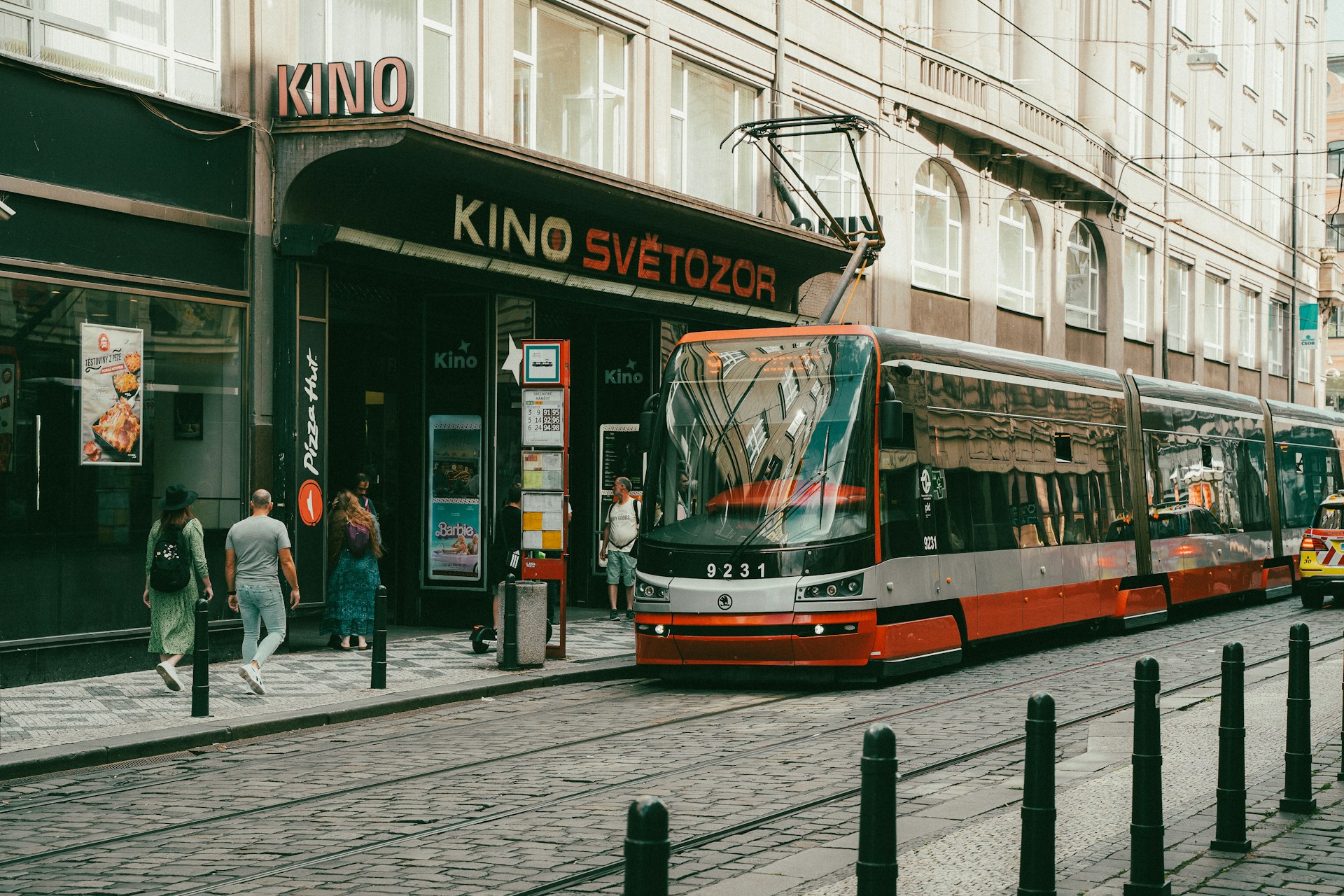Public transport is the backbone of urban mobility, connecting millions to workplaces, schools, and recreational areas. In the UK, the challenge remains to enhance the efficiency, safety, and sustainability of public transport systems. Leveraging AI-driven solutions presents a promising opportunity to achieve significant improvements. Let’s explore how artificial intelligence, SAP data, and advanced technologies can revolutionize the public transport system in the UK.
The Role of AI in Modern Public Transport
AI technologies are gradually transforming various industries, and public transport is no exception. By using data intelligence and machine learning, AI can address long-standing challenges in urban mobility.
Additional reading : What Are the Key Trends in AI for Enhancing UK’s Retail Customer Experience?
Enhancing Traffic Management
Effective traffic management is crucial to minimizing delays and improving overall efficiency. AI can predict traffic patterns using historical data and real-time information, allowing transportation authorities to anticipate congestion and manage it proactively. For instance, SAP HANA and SAP Datasphere can integrate vast amounts of data from traffic sensors and public transit systems, providing insights that enable smarter traffic control measures.
By utilizing machine learning algorithms, AI can analyze traffic flow and suggest optimal routes for buses and other public vehicles. This not only reduces travel time for commuters but also enhances fuel efficiency, contributing to environmental sustainability. Moreover, AI-driven traffic management systems can adjust traffic signals in real-time, further reducing congestion and improving the overall flow of urban traffic.
Also to read : What Are the Best Practices for Implementing AI in UK Public Health Services?
Real-Time Public Transport Monitoring
Passengers in the UK often face uncertainty regarding bus schedules and delays. AI and computer vision technologies can significantly enhance the reliability of public transport by offering real-time monitoring and updates. For example, AI-powered systems can track the location of buses and predict arrival times with high accuracy.
By integrating these capabilities with SAP Analytics Cloud, transportation authorities can provide commuters with up-to-date information via mobile applications and digital displays at bus stops. This real-time monitoring system not only improves passenger satisfaction but also allows for better fleet management, ensuring that vehicles are allocated efficiently and that service disruptions are minimized.
Improving Safety and Security with AI
Safety is a paramount concern in public transport. AI-driven solutions can substantially enhance the security measures in place, making public transport safer for everyone.
Surveillance and Incident Detection
AI and computer vision systems excel in enhancing surveillance capabilities. By analyzing video feeds from cameras installed in public transport vehicles and stations, AI can detect suspicious activities and potential threats in real-time. This proactive approach enables authorities to respond swiftly to incidents, ensuring passenger safety.
Additionally, AI can assist in maintaining safety standards by monitoring driver behavior. For example, AI can detect signs of fatigue or distraction in bus drivers and issue alerts, preventing accidents before they occur. These systems can also monitor vehicle conditions and notify maintenance teams about potential issues, ensuring that vehicles remain in optimal working condition.
Enhancing Public Safety Measures
AI can also play a vital role in managing public safety during peak hours and special events. By analyzing crowd patterns and predicting passenger volumes, AI can help transportation authorities deploy additional resources and adjust service schedules to accommodate the increased demand. This proactive approach ensures that passengers can travel safely and comfortably, even during busy periods.
Furthermore, AI-driven systems can enhance emergency response capabilities. In the event of an incident, AI can quickly analyze the situation and provide emergency responders with critical information, such as the location of the incident and the number of affected passengers. This enables a faster and more effective response, minimizing the impact of emergencies on public transport services.
Optimizing Fleet and Resource Management
Efficient fleet management is essential for maintaining a reliable and cost-effective public transport system. AI-driven solutions can optimize resource allocation and improve the overall efficiency of public transport operations.
Predictive Maintenance
One of the most significant advantages of AI in fleet management is predictive maintenance. By analyzing data from various sensors installed in public transport vehicles, AI can predict when a vehicle is likely to require maintenance. SAP HANA Cloud and SAP BTP can process and analyze this data, providing transportation authorities with actionable insights.
Predictive maintenance minimizes downtime by addressing potential issues before they escalate into major problems. This not only ensures that vehicles remain in service for longer periods but also reduces maintenance costs and enhances the overall reliability of the fleet.
Efficient Scheduling and Routing
AI can optimize scheduling and routing for public transport vehicles, ensuring that they operate efficiently and meet the needs of passengers. By analyzing SAP core data, AI algorithms can determine the most efficient routes and schedules based on factors such as passenger demand, traffic conditions, and historical data.
This optimization process helps reduce waiting times for passengers and ensures that vehicles are utilized effectively. Additionally, AI-driven scheduling and routing can enhance the flexibility of public transport services, allowing authorities to adjust routes and schedules in response to changing conditions and passenger needs.
The Future of AI-Driven Public Transport
The integration of AI-driven solutions in public transport is still in its early stages, but the potential benefits are immense. As technology continues to evolve, we can expect even more innovative applications of AI in the transportation industry.
Autonomous Vehicles
One of the most exciting prospects for the future of public transport is the development of autonomous vehicles. AI and computer vision technologies are at the forefront of this revolution, enabling vehicles to navigate and operate without human intervention. While fully autonomous public transport systems may still be a few years away, the progress made so far is promising.
Autonomous vehicles can significantly improve the efficiency and safety of public transport. By eliminating the need for human drivers, these vehicles can operate around the clock, providing uninterrupted service to passengers. Additionally, autonomous vehicles can communicate with each other and with traffic management systems, optimizing routes and reducing congestion.
Data-Driven Decision-Making
The use of data intelligence and analytics cloud solutions, such as SAP Analytics, will continue to play a crucial role in the evolution of public transport. By harnessing the power of data, transportation authorities can make informed decisions that enhance the efficiency and effectiveness of public transport services.
For example, AI-driven data analysis can identify patterns and trends in passenger behavior, enabling authorities to tailor services to meet the needs of different demographics. This data-driven approach ensures that public transport remains responsive to the changing needs of passengers, providing a better overall experience.
Enhancing Mobility as a Service (MaaS)
The concept of Mobility as a Service (MaaS) is gaining traction worldwide, and AI is poised to play a significant role in its development. MaaS integrates various modes of transport into a single, seamless service, allowing passengers to plan and pay for their journeys through a single platform.
AI can enhance MaaS by providing personalized recommendations based on individual preferences and travel patterns. By analyzing data lakes and leveraging cloud SAP technologies, AI can offer passengers the most efficient and convenient travel options. This not only improves the passenger experience but also encourages the use of public transport, reducing the reliance on private vehicles and contributing to environmental sustainability.
AI-driven solutions have the potential to revolutionize public transport in the UK, enhancing efficiency, safety, and passenger satisfaction. By leveraging advanced technologies such as SAP HANA, machine learning, and computer vision, transportation authorities can address long-standing challenges and create a more reliable and sustainable public transport system.
From real-time traffic management and predictive maintenance to autonomous vehicles and data-driven decision-making, AI offers a wide range of applications that can transform the transportation industry. As we continue to embrace these innovations, the future of public transport in the UK looks brighter than ever.
In summary, AI-driven solutions will play a pivotal role in shaping the future of public transport, improving the efficiency and effectiveness of services for millions of passengers. By harnessing the power of AI and data intelligence, we can create a public transport system that is not only efficient and reliable but also safe and sustainable.











